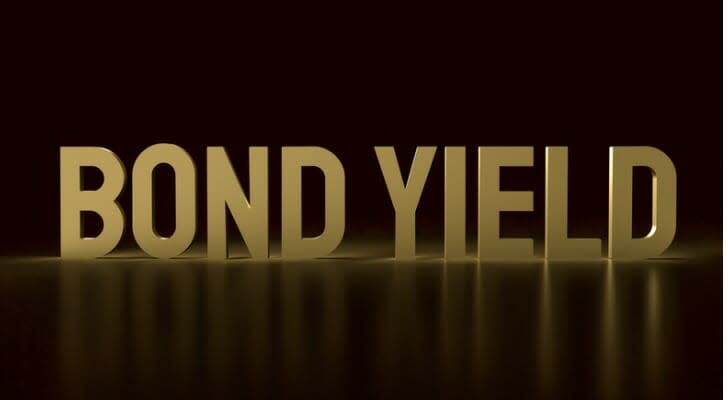Want 9.62% Yield Guaranteed? Seriously, Try This Asset
There’s a bond that pays a 9.62% interest rate and is guaranteed by the U.S. Treasury. Investors should keep some limitations and conditions in mind before investing, but as inflation has topped 8% since March 2022, this could be an attractive option for the fixed-income portion of your portfolio. Consider working with a financial advisor as you seek capital appreciation or capital preservation in a high-inflation environment.
Don’t miss out on news that could impact your finances. Get news and tips to make smarter financial decisions with SmartAsset’s semi-weekly email. It’s 100% free and you can unsubscribe at any time. Sign up today.
What Are iBonds?
Known as the Series I Savings Bonds, or iBonds for short, the Treasury created them in 1998 as a way to help savers deal with inflation. They come in durations that range from one year to 30 years. This bond has two rates: a fixed rate, which is always zero, and an inflation rate, which is linked to the Consumer Price Index for all Urban Consumers (CPI-U). The interest earned every six months is added to the value of the bond’s principal. Also, in May and November, the Treasury adjusts this bond’s inflation rate in line with the latest CPI-U reading.
Together the interest rate and the inflation adjustment on the iBonds, which are sold at face value, are called the “composite rate.” The composite rate on a this kind of bond can never fall below zero, even in the rare event that deflation would otherwise drag a bond’s composite rate into negative numbers.
Pros of iBonds
There are several aspects of these bonds that make them attractive:
-
They currently have one of the highest rates of interest available. From May 2022 through October 2022 these bonds pay 9.62% interest. That’s hard to ignore when the Bloomberg U.S. Aggregate bond index has paid a negative 9.4% rate so far in 2022.
-
Series I Savings Bonds are not subject to state or local taxes.
-
They have the security of a U.S. government guarantee.
-
Series I Savings Bonds are easy to buy. You can buy up to $10,000 worth of them online. You also can buy an additional $5,000 of paper bonds using your federal income tax refund.
Potential Drawbacks of iBonds
These bonds carry a few conditions and limitations that may dampen their appeal to some fixed-income investors. For one thing, their future returns can decline since they are pegged to the CPI-U. Only U.S. citizens, legal residents or civilian employees of the U.S. government (regardless of citizenship or residency) may buy iBonds. There’s no market for your iBond. Finally, iBonds also carry these deadlines:
-
Within one year of purchase: You cannot cash the bond.
-
Within one year and five years of purchase: You can cash the bond, but you’ll forfeit the previous three months’ interest payments. This is known as early redemption.
-
Five years or longer: If you want to avoid a penalty, you have to wait at least five years.
-
After 30 years of purchase: The bond ceases to pay interest and so becomes vulnerable to inflation.
Why Other High-Yielding Bonds Are Less Attractive (Right Now)
A Series I Savings Bond is an exception to the caution currently being voiced by financial experts about other higher-yield bonds.
Charles Schwab, for example, says credit spreads, the difference in rates between corporate bonds and government bonds of similar duration, are small. Corporate bonds pay more than government bonds to reward investors for taking the risk of lending to a private enterprise that could default. But currently the difference in rates between the two is still too small to justify buying the higher-yielding corporate bonds.
Schwab also notes that corporate profit growth is slowing, citing inflation, supply chain issues and borrowing costs. “Rising borrowing costs via higher interest payments can eat into corporate profits,” the firm said. “Meanwhile, wage gains are good for consumers, but can be a pain point for corporations, as it’s another input cost on the rise.”
Finally, the yield curve is not looking favorable for high-yield bonds – except iBonds. The yield curve is a curve on a graph that tracks the yield of bonds of various durations. Normally, shorter duration bonds yield less longer duration bonds, and high-yield bond total returns relative to Treasurys have been strongest when the yield curve is steep (long duration bonds paying more than short duration bonds). However, as of May 2022, the yield on 2-year and 10-year government bonds was very close, and in fact the previous month the 2-year actually exceeded the 10-year, which is called an inversion. That strains the profitability of high-yield bond issuers like banks.
Bottom Line
Series I Savings Bonds are a powerful anchor to windward, financially speaking. They are low-risk savings bonds issued by the U.S. government that pay a very high interest rate. Through October 2022 they were paying a lofty 9.62%. You may purchase these either electronically via TreasuryDirect (up to $10,000) or you can use your IRS tax refund to buy paper Series I bonds (up to $5,000). By combining electronic and paper purchases, you can buy up to $15,000 of Series I bonds each year. Keep in mind that there is no secondary market for them.
Tips on Investing
-
A financial advisor can help you handle the fixed-income portion of your portfolio as interest rates rise and inflation rages. SmartAsset’s free tool matches you with up to three financial advisors who serve your area, and you can interview your advisor matches at no cost to decide which one is right for you. If you’re ready to find an advisor who can help you achieve your financial goals, get started now.
-
Check out SmartAsset’s no-cost inflation calculator to help you determine the buying power of a dollar over time in the United States.
Photo credit: ©iStock.com/niphon, ©iStock.com/Weekend Images Inc., ©iStock.com/FG Trade
The post Want 9.62% Yield Guaranteed? Seriously, Try This Asset appeared first on SmartAsset Blog.







